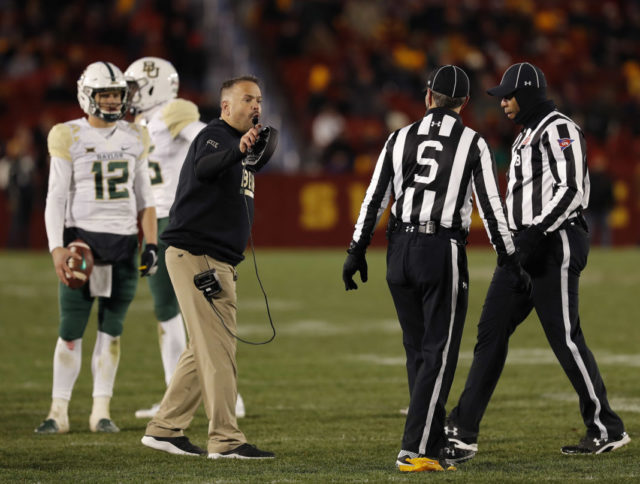By Jessika Harkay | Sports Writer
The NCAA oversight committee spent over seven hours last week discussing a variety of issues — but most importantly focused on discussing the future of the college football overtime and targeting rules.
With the notable LSU and Texas A&M matchup that went into seven overtimes in the 2018 season, and recent NFL playoff results in question, many doubts have emerged about NCAA football and the NFL’s targeting and overtime rules.
Inevitably error in play-calling is always going to exist. To name a few examples: the NFC Championship game between the Los Angeles Rams and New Orleans Saints had a missed targeting call which created outrage and many claims that it cost the Saints the opportunity to play in the Super Bowl. To name a few in the college league: LSU lost its star linebacker Devin White over a controversial hit and call in week eight and Ohio State lost its safety Isaiah Pryor for a hit on a Penn State player. The pattern of questionable calls continuously grew throughout the season.
ESPN Reporter Andrea Adelson, spoke with committee chairman Shane Lyons about details regarding the on-going and open discussion to make the game more efficient, safe and timely.
According to Adelson’s article, “In 817 games during the 2018 season, 275 targeting calls were made, and 96 were overturned. In 816 games in 2017, 266 targeting calls were made, and 87 were overturned.” This means that the over a third of the targeting calls were wrong, and throughout the two years the wrong calls seemingly increased by two percent.
A 15-yard penalty is only half of the punishment for targeting calls. The biggest difference compared to the professional league is the NCAA’s zero-tolerance policy for dirty and unsafe hits which results in the immediate ejection of the player.
Going forward, a well-considered suggestion includes creating categories for targeting rules. The first category is for unmalicious behavior that would only carry the penalty. The second category would be for purposeful hits and would result in possible suspension and ejection without question.
Not only is the question of targeting rules arising, but so is the efficiency of overtime. Though both teams are given a chance to possess the ball offensively and are generally viewed as a fair tie-breaker, the college overtime is time-consuming according to Lyons.
In Adelson’s article, Lyons addressed the questions that are pushing a need for change forward in the foreseeable future.
“The question is: Are there things we can tweak in the overtime that could possibly shorten the length?” Lyons said. “Do you leave it the same? Do you automatically have to go for two even after your first touchdown for both teams? What are some things to potentially lessen the overtime?”
Nothing’s for sure with what the committees’ discussions will lead to, but the consideration for change is something to keep an eye on as the football rules and football competition committee plan to meet in February to finalize the 2019 season regulations. Going forward, the improvements to the rules are not only more fair to players, but the growing football audience who often have expressed discontent with some of the regulations in action right now.



